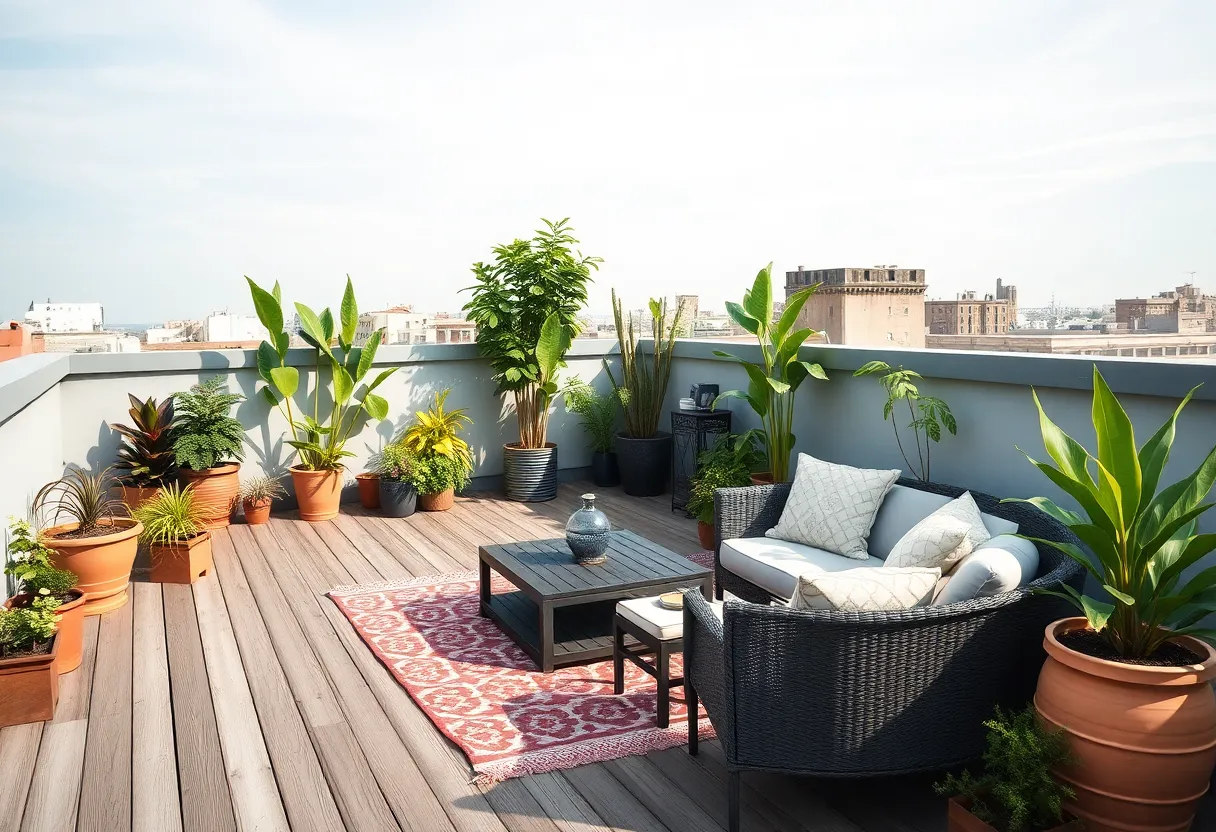

A vibrant DIY roof deck designed for relaxation and entertainment.
Article Sponsored by:
Mays Contracting is more than just a roofing company; it’s a family legacy built on trust and quality. Founded in 1979, we’ve been serving the community for over four decades. Our story began with a simple vision: to provide exceptional roofing services for both residential and commercial properties. This vision has guided us ever since, as we’ve grown from a small, family-run operation to a trusted name in the industry.
Building a DIY roof deck can transform a mundane rooftop into a vibrant living space. It provides an area for relaxation, entertainment, and outdoor activities while also enhancing a property’s aesthetic appeal. This guide covers essential steps designed for beginners to undertake this project safely and effectively.
Before starting any construction, it’s critical to assess the existing roof structure. Determine if the roof can sustain the weight of a deck, furniture, and occupants. Consult with a structural engineer if you’re uncertain. This evaluation ensures safety and compliance with local building codes.
Decide how you want to utilize the deck. Will it serve as an entertainment space, a garden retreat, or a storage area? Understanding its primary function will guide your design choices, including layout, materials, and features like built-in seating or planters.
Research local building codes and zoning regulations. Some areas might require a permit for construction, especially if the deck alters roof height or involves significant modifications. Securing the necessary permissions ensures you avoid legal complications.
Your materials will depend on the style of deck you intend to build, but common needs include:
Gather the necessary tools for the construction process:
Begin the deck building process by constructing a frame. Start with the perimeter beams, anchoring them securely to the building. Make sure to level them and space them according to your design.
Once the perimeter frame is in place, install the joists. These should be spaced appropriately—typically 16 inches apart. Use joist hangers for extra stability, ensuring that each joist is level with the others.
Select a decking material suitable for your intended finish. Wood offers a classic look, while composite materials provide durability with low maintenance. Consider the climate in your area, as certain materials may perform better in extreme weather.
Begin laying your decking boards starting from one end of the deck. Leave a small gap between each board to allow for water drainage and expansion. Secure each board with screws, making sure they’re flush with the joists for a smooth finish.
Railings are essential for safety, particularly if your deck is elevated. They prevent accidental falls, providing a crucial safety barrier.
Use materials compatible with your decking, ensuring they match aesthetically. Common choices include wood or metal. Begin by installing corner posts, then attach horizontal rails. Ensure the height meets local building code requirements.
After completing the main structure, apply a sealant to protect the wood from moisture and UV damage. This will prolong the life of your deck. Select a sealant compatible with your decking material, following the manufacturer’s instructions for application.
Consider adding planters, cushions, or furniture to enhance the usability of your new outdoor space. Incorporating greenery can create a more inviting environment and help shade the area on hot days.
After constructing your roof deck, check it regularly for signs of wear or damage. Look for loose boards, rust on fasteners, and water pooling. Address issues promptly to maintain safety and longevity.
Regular cleaning is vital to keep the deck looking appealing. Depending on materials, you may need to power wash, scrub with a mild detergent, or even sand down worn areas periodically. Follow care instructions specific to your deck materials.
Building a DIY roof deck can significantly enhance your outdoor living experience. By following this detailed step-by-step guide, beginners can successfully tackle the project from planning through to maintenance. Remember to prioritize safety, comply with local regulations, and enjoy the newfound outdoor space that your DIY effort has created.

Quality Roof Construction and Repair in Lexington, Richland, Newberry and Laurens Counties for over 40 Years.
News Summary South Carolina has been named the top growth state for 2024, overtaking Texas…
News Summary In Charleston, the proposed S.244, or the South Carolina Justice Act, aims to…
News Summary In a spectacular comeback, the Newberry Bulldogs high school baseball team defeated the…
News Summary The Saluda community rallies together to honor the memory of two fallen heroes…
News Summary The community of Newberry County, S.C. is breathing a sigh of relief as…
News Summary Xavier Becerra, former U.S. Secretary of Health and Human Services, has declared his…